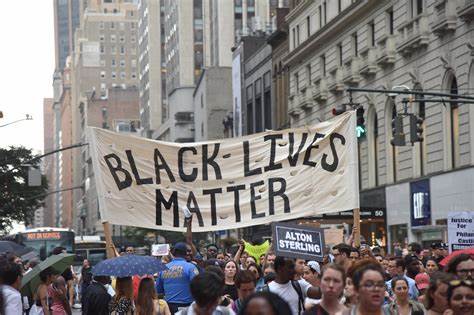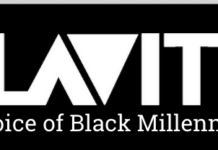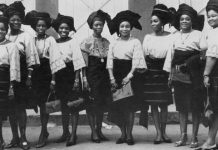Black Lives Matter is one of the most imperative social justice movements in the 21st century. Since its conception in 2013, BLM has grown to become a powerful international movement that creates conversations, alters policies, and inspires many more activists around the world. Its strategies and aspirations have changed social justice.
History of Black Lives Matter
Founding of BLM
Black Lives Matter was founded in 2013 by Alicia Garza, Patrisse Cullors, and Opal Tometi in response to the acquittal of George Zimmerman, who had murdered Trayvon Martin, a young Black teenager. The acquittal shocked the entire United States.
Their message was clear: Black lives are undervalued, and systemic racism persists. Their hashtag quickly became a rallying cry for police brutality, racial inequality, and social injustice.
From Hashtag to Movement
It was a social media movement that would soon turn into something much bigger and much more important movement. Everywhere in the country, activists organized protests and rallies. BLM chapters sprouted in cities nationwide, taking on issues pertinent only to local communities.
However, it is the killing of George Floyd, which happened in 2020, that propelled the movement worldwide.
The George Floyd Moment
It was the death of George Floyd in Minneapolis that tipped the balance. The world sat stunned at watching a policeman with his knee locked onto George Floyd’s neck for over nine minutes. It was his dying words, “I can’t breathe,” which have become a battle cry against injustice.
From the United States to the world, from London to Sydney and Paris, millions marched through streets demanding justice for George Floyd and an end to systemic racism.
The global reaction further underlined that the fight against racial injustice is universal. It showed that BLM was not an American movement but a call for change on the international platform.
Also read: The Evolution of African American Fashion: A Journey Through History
Intersectionality in Action
One of the strengths of BLM is its intersectionality. Invented by Kimberlé Crenshaw, intersectionality recognizes that several forms of oppression-race, gender, class, and sexuality-overlap.
Advocacy for Marginalized Groups
BLM It fights for the issues of specific groups in the Black community. It fights for the rights of Black women, LGBTQ+ people, and disabled people. It is with this approach that there are campaigns such as #SayHerName on violence against Black women, who are never heard of because no one ever reported it.
In this way, no one gets left behind as people fight for justice.
Decentralized leadership
BLM is a decentralized movement. Unlike any other organization that has one head, BLM allows the different chapters to set the pace. A chapter focuses on the needs of its community yet remains in consonance with the overall goals of the movement.
Benefits of Decentralization
This decentralized framework has several merits. It accommodates grassroots action. It helps the movement become adaptive and robust. Decentralize transfers the focus away from individual heads to collective actions.
The Role of Social Media
Social media is the driving force behind BLM’s success. It is on Twitter, Instagram, and Facebook where the voices and information get amplified and spread fast. The viral hashtags #BlackLivesMatter and #SayHerName has drawn attention to some cases of injustice around the world.
Social media also is an organizing tool. It is the same social media through which activists use to coordinate protests, share educational resources, and mobilize supporters.
Digital activism is the hallmark of modern movements, and BLM has set the standard.
Protests and Public Demonstrations
BLM is perhaps best known for its protests. These demonstrations draw attention to injustices and demand accountability.
But BLM protests are more than marches. They are spaces of creativity and expression. Protesters carry signs with powerful messages. Artists create murals and installations that honor victims of police violence.
These are demonstrations of resistance and celebrations of community. They articulate power in the actions of many.
Change Policy
Protests are pretty powerful, but BLM is doing work toward really changing policy. The organization champions reforms aimed at combating systemic racism and inequality.
Campaigns like the “Defund the Police” campaign advocate for the funds going to the police to be shifted to education, housing, and healthcare. BLM advocates for legislation that ensures law enforcement accountability and reduces mass incarceration.
The movements prove that BLM is more than just an awareness movement; it’s sustainable change.
Empowering Other Movements
In addition to the recent wave of social justice activism, movements like Black Lives Matter inspired movements similar to #MeToo and #StopAsianHate, using many of the same strategies in the sense that both used social media to amplify previously marginalized voices.
BLM also has focused heavily on intersectionality and grassroots organizing in ways that would set an extremely high bar of precedent for modern activism: it shows that collective action can lead to global change.
Challenges/Criticism
As with any movement, BLM is not without its challenges. Detractors often say it is divisive or that its goals are unattainable. Some argue the movement incites violence when, in fact, it seeks peaceful protests.
There is also the problem of performative allyship. Corporations and politicians will often publicly show support for BLM but take little action. This co-opting can weaken the message of the movement.
Despite these challenges, BLM endures. It continues to evolve and expand.
Education and Awareness
Education is the backbone of BLM’s mission. The movement seeks to inform the public about systemic racism and its impact. It shares resources like books, articles, and documentaries to foster understanding.
Education empowers people to challenge oppressive systems. It creates informed allies who can advocate for change.
BLM’s commitment to education ensures that its impact extends beyond protests.
A Vision for the Future
It is not just a moment. BLM is a movement with a long-term vision, looking for a world where black lives matter; a world that feels safe; a world of justice for everyone.
The way is long, but an undeniable impact lies ahead of BLM. Inspiring millions of people to take up their voices against oppression. Inspiring a world that otherwise avoids the discussions on it.
The BLM legacy would be one of resilience, hope, and transformation.
Black Lives Matter has transformed social justice movements. It has brought into focus systemic racism and inspired global solidarity.








